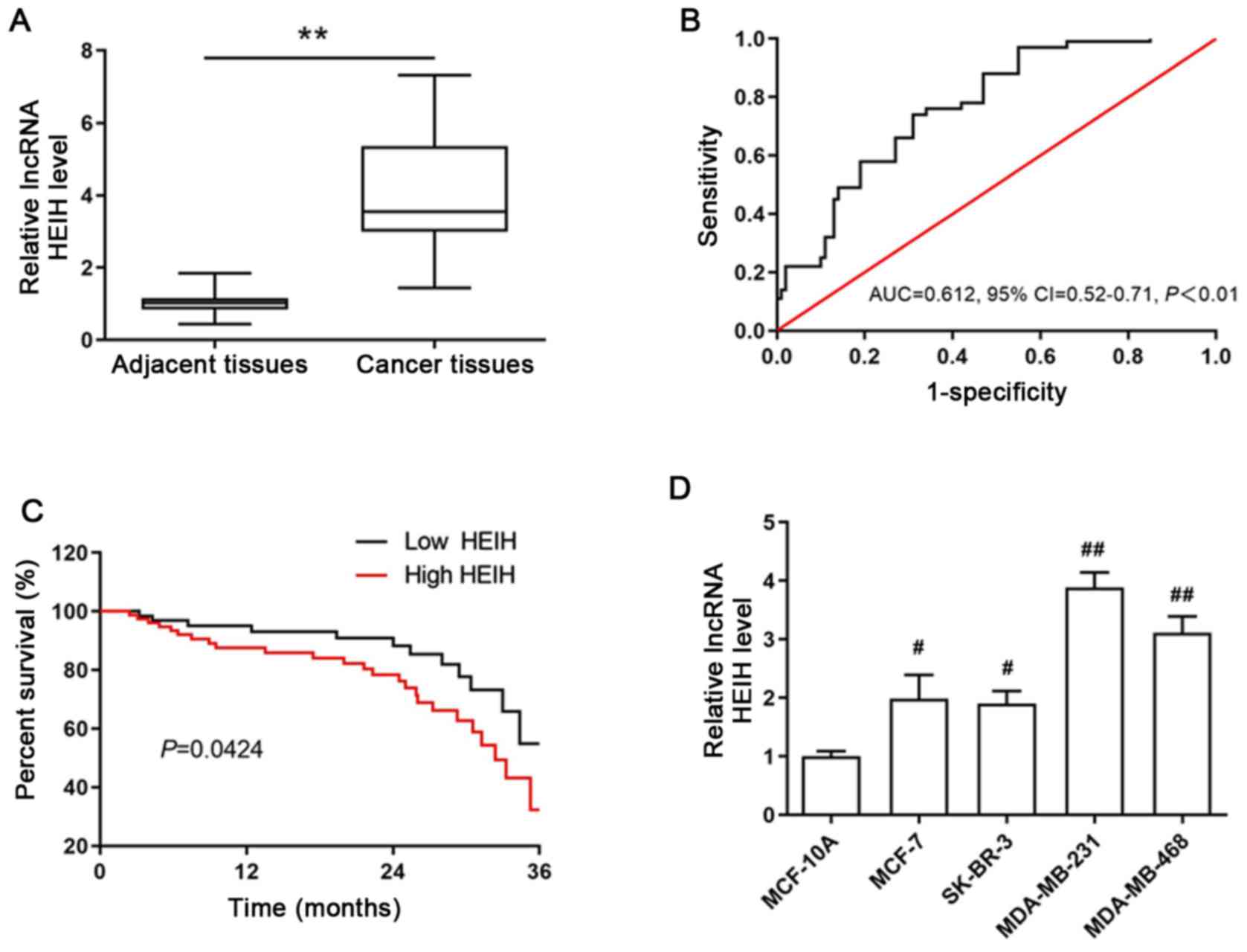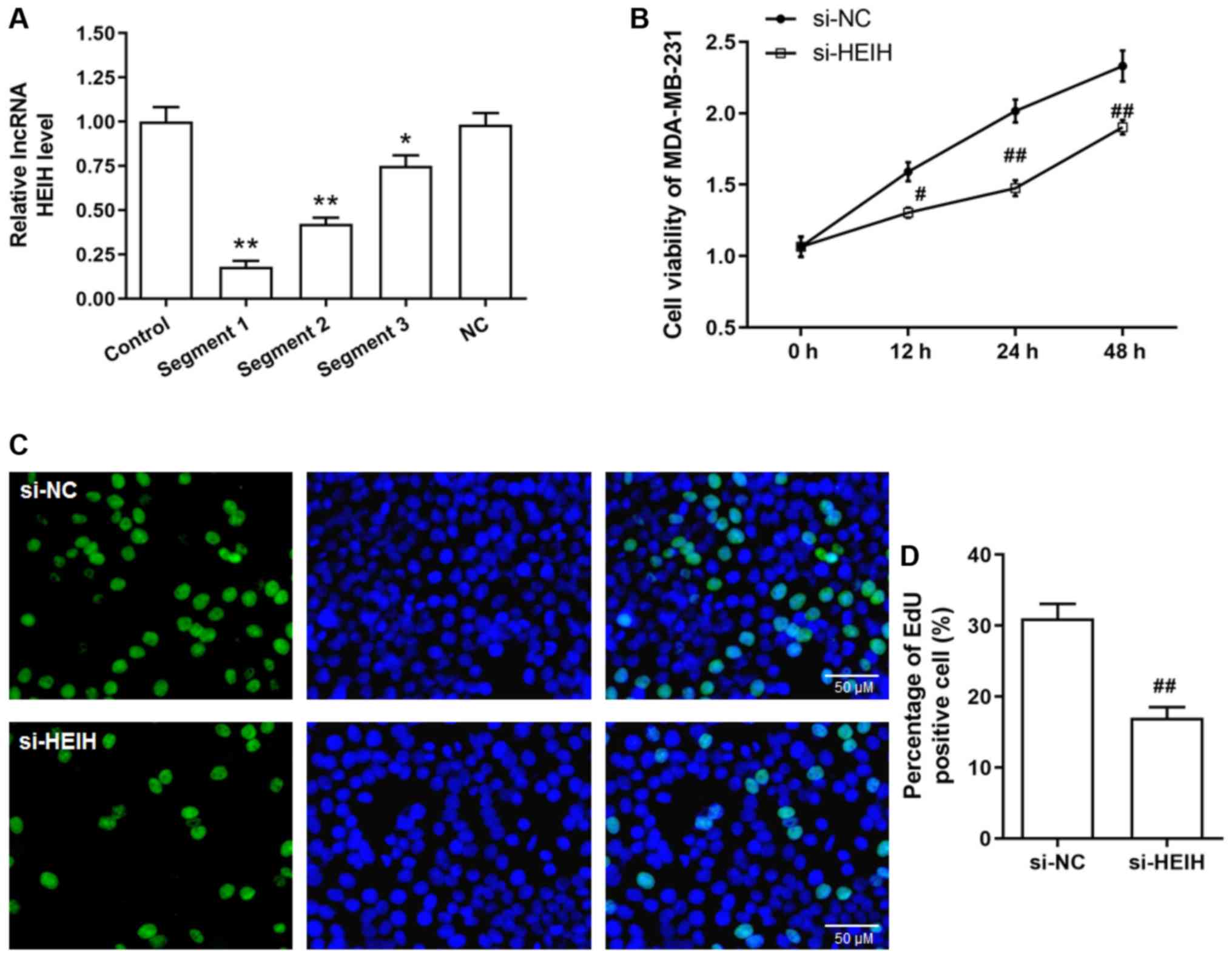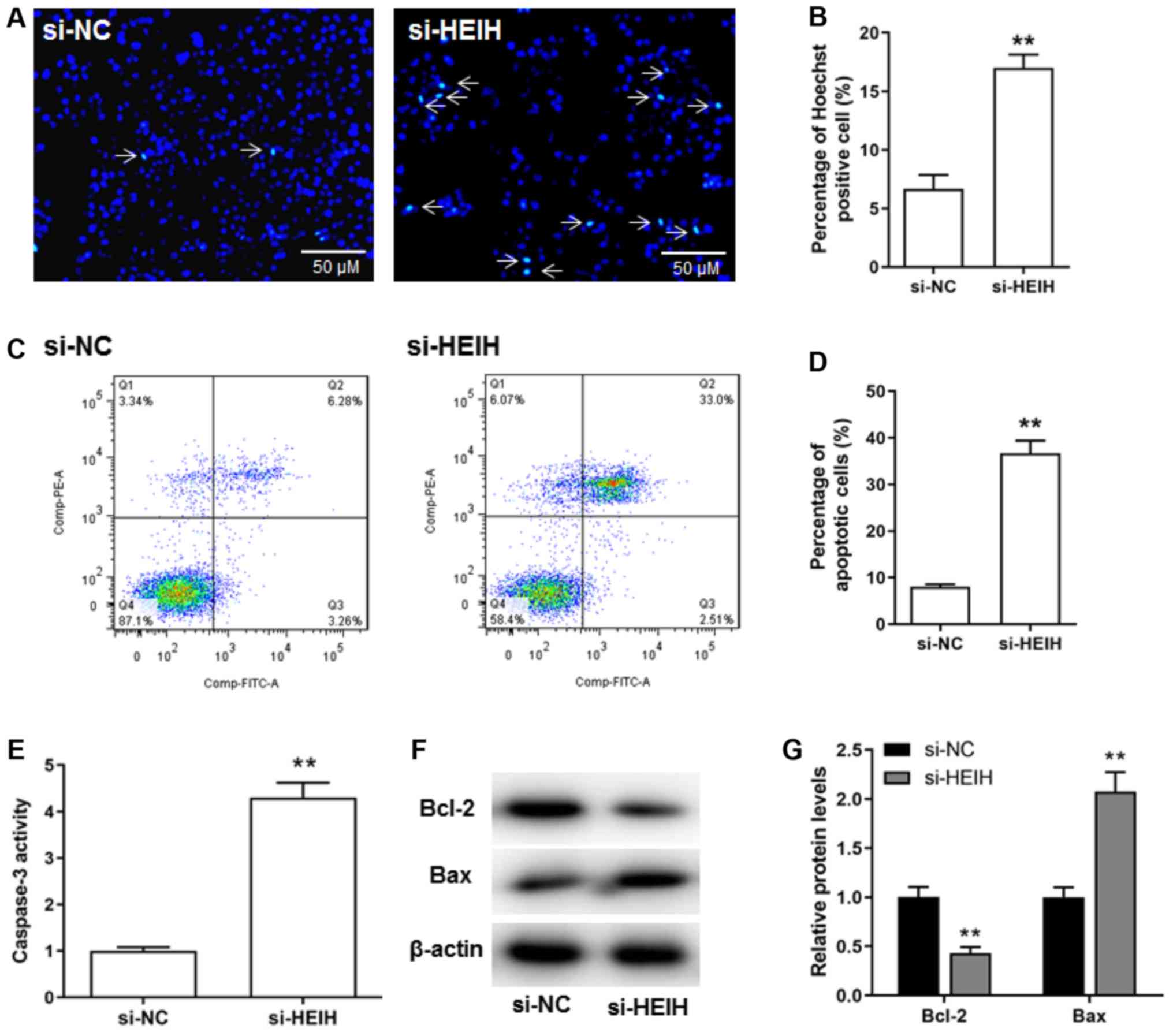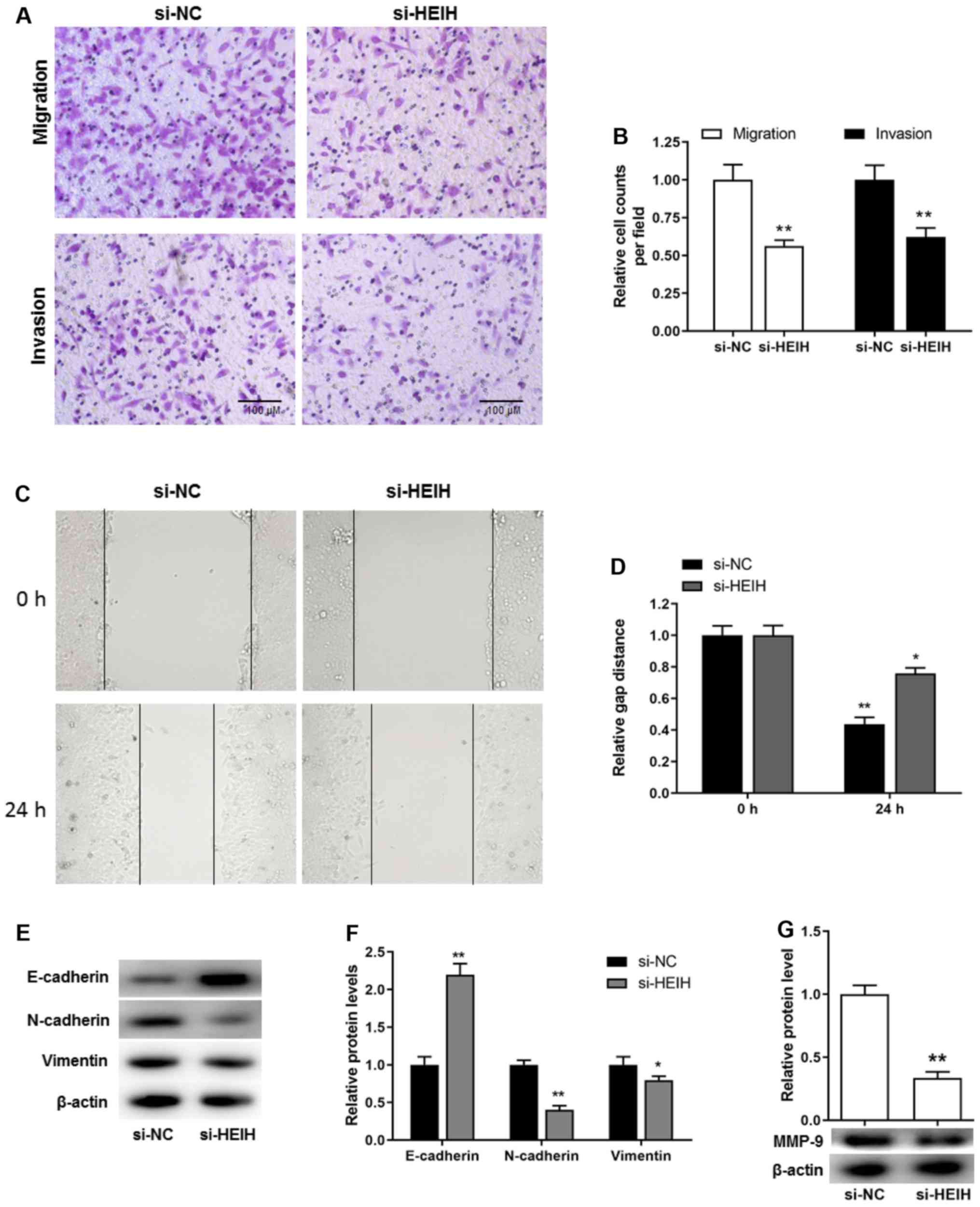|
1
|
Gardezi SJS, Elazab A, Lei B and Wang T:
Breast cancer detection and diagnosis using mammographic data:
Systematic review. J Med Internet Res. 21:28692019. View Article : Google Scholar
|
|
2
|
Merino Bonilla JA, Torres Tabanera M and
Ros Mendoza LH: Breast cancer in the 21st century: From early
detection to new therapies. Radiologia. 59:368–379. 2017.
View Article : Google Scholar : PubMed/NCBI
|
|
3
|
Kumar M, DeVaux RS and Herschkowitz JI:
Molecular and cellular changes in breast cancer and new roles of
lncRNAs in breast cancer initiation and progression. Prog Mol Biol
Transl Sci. 144:563–586. 2016. View Article : Google Scholar : PubMed/NCBI
|
|
4
|
Bhan A, Soleimani M and Mandal SS: Long
noncoding RNA and cancer: A new paradigm. Cancer Res. 77:3965–3981.
2017. View Article : Google Scholar : PubMed/NCBI
|
|
5
|
Yang F, Zhang L, Huo XS, Yuan JH, Xu D,
Yuan SX, Zhu N, Zhou WP, Yang GS, Wang YZ, et al: Long noncoding
RNA high expression in hepatocellular carcinoma facilitates tumor
growth through enhancer of zeste homolog 2 in humans. Hepatology.
54:1679–1689. 2011. View Article : Google Scholar : PubMed/NCBI
|
|
6
|
Ma Y, Cao D, Li G, Hu J, Liu X and Liu J:
Silence of lncRNA HEIH suppressed liver cancer cell growth and
metastasis through miR-199a-3p/mTOR axis. J Cell Biochem.
120:17757–17766. 2019. View Article : Google Scholar : PubMed/NCBI
|
|
7
|
Cui C, Zhai D, Cai L, Duan Q, Xie L and Yu
J: Long noncoding RNA HEIH promotes colorectal cancer tumorigenesis
via counteracting miR-939mediated transcriptional repression of
Bcl-xL. Cancer Res Treat. 50:992–1008. 2018. View Article : Google Scholar : PubMed/NCBI
|
|
8
|
Zhao H, Xing G, Wang Y, Luo Z, Liu G and
Meng H: Long noncoding RNA HEIH promotes melanoma cell
proliferation, migration and invasion via inhibition of
miR-200b/a/429. Biosci Rep. 37:BSR201706822017. View Article : Google Scholar : PubMed/NCBI
|
|
9
|
Jia K, Chen F and Xu L: Long noncoding RNA
HEIH promotes the proliferation and metastasis of non-small cell
lung cancer. J Cell Biochem. 120:3529–3538. 2019. View Article : Google Scholar : PubMed/NCBI
|
|
10
|
Livak KJ and Schmittgen TD: Analysis of
relative gene expression data using real-time quantitative PCR and
the 2(-Delta Delta C(T)) method. Methods. 25:402–408. 2001.
View Article : Google Scholar : PubMed/NCBI
|
|
11
|
Li WQ, Li XH, Wu YH, Du J, Wang AP, Li D
and Li YJ: Role of eukaryotic translation initiation factors 3a in
hypoxia-induced right ventricular remodeling of rats. Life Sci.
144:61–68. 2016. View Article : Google Scholar : PubMed/NCBI
|
|
12
|
Ling H, Vincent K, Pichler M, Fodde R,
Berindan-Neagoe I, Slack FJ and Calin GA: Junk DNA and the long
non-coding RNA twist in cancer genetics. Oncogene. 34:5003–5011.
2015. View Article : Google Scholar : PubMed/NCBI
|
|
13
|
Ling H, Krassnig L, Bullock MD and Pichler
M: MicroRNAs in testicular cancer diagnosis and prognosis. Urol
Clin North Am. 43:127–134. 2016. View Article : Google Scholar : PubMed/NCBI
|
|
14
|
Thomas J, Ohtsuka M, Pichler M and Ling H:
MicroRNAs: Clinical relevance in colorectal cancer. Int J Mol Sci.
16:28063–28076. 2015. View Article : Google Scholar : PubMed/NCBI
|
|
15
|
Troppan K, Wenzl K, Deutsch A, Ling H,
Neumeister P and Pichler M: MicroRNAs in diffuse large B-cell
lymphoma: Implications for pathogenesis, diagnosis, prognosis and
therapy. Anticancer Res. 34:557–564. 2014.PubMed/NCBI
|
|
16
|
Youness RA and Gad MZ: Long non-coding
RNAs: Functional regulatory players in breast cancer. Noncoding RNA
Res. 4:36–44. 2019. View Article : Google Scholar : PubMed/NCBI
|
|
17
|
Xu N, Wang F, Lv M and Cheng L: Microarray
expression profile analysis of long non-coding RNAs in human breast
cancer: A study of Chinese women. Biomed Pharmacother. 69:221–227.
2015. View Article : Google Scholar : PubMed/NCBI
|
|
18
|
Shen X, Xie B, Ma Z, Yu W, Wang W, Xu D,
Yan X, Chen B, Yu L, Li J, et al: Identification of novel long
non-coding RNAs in triple-negative breast cancer. Oncotarget.
6:21730–21739. 2015. View Article : Google Scholar : PubMed/NCBI
|
|
19
|
Yang F, Lyu S, Dong S, Liu Y, Zhang X and
Wang O: Expression profile analysis of long noncoding RNA in
HER-2-enriched subtype breast cancer by next-generation sequencing
and bioinformatics. OncoTargets Ther. 9:761–772. 2016. View Article : Google Scholar
|
|
20
|
Ma D, Chen C, Wu J, Wang H and Wu D:
Up-regulated lncRNA AFAP1-AS1 indicates a poor prognosis and
promotes carcinogenesis of breast cancer. Breast Cancer. 26:74–83.
2019. View Article : Google Scholar : PubMed/NCBI
|
|
21
|
Park SY, Choi JH and Nam JS: Targeting
cancer stem cells in triple-negative breast cancer. Cancers
(Basel). 11:9652019. View Article : Google Scholar
|
|
22
|
McCann KE, Hurvitz SA and McAndrew N:
Advances in targeted therapies for triple-negative breast cancer.
Drugs. 79:1217–1230. 2019. View Article : Google Scholar : PubMed/NCBI
|
|
23
|
Saleh R, Taha RZ, Sasidharan Nair V,
Alajez NM and Elkord E: PD-L1 blockade by atezolizumab
downregulates signaling pathways associated with tumor growth,
metastasis, and hypoxia in human triple negative breast cancer.
Cancers (Basel). 11:10502019. View Article : Google Scholar
|


















